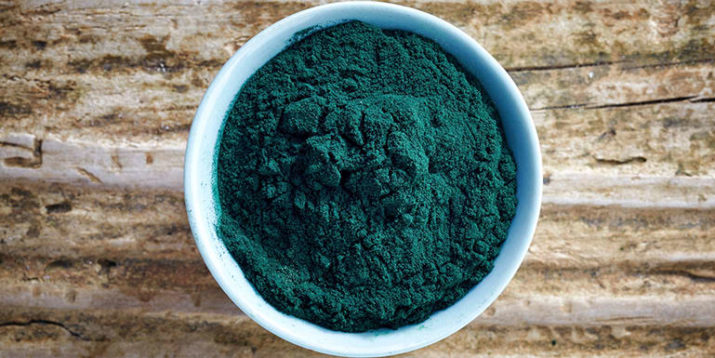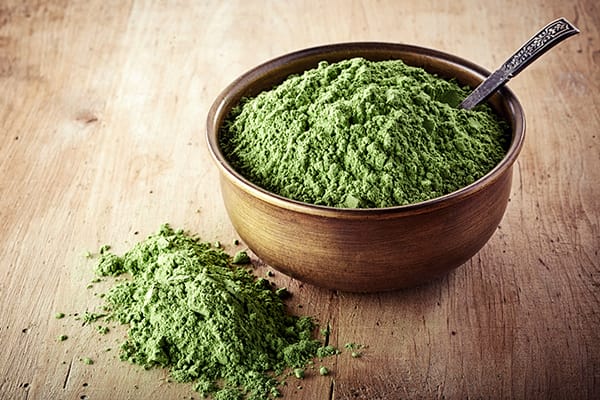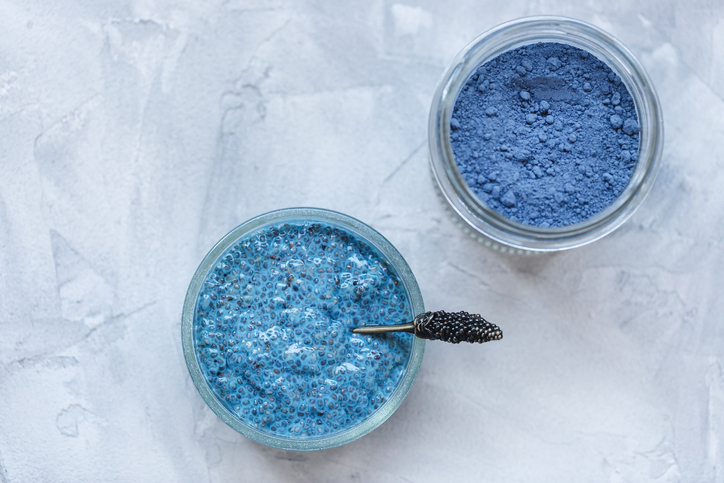What Is Spirulina and How Do I Eat It?

Like all trends, everything that was once old is new again, and that’s especially true for foods. The hot “new” foods are usually ones that have already have a rich history as a nutritious food source, but are just now getting their moment in the spotlight.
Prime example? Spirulina. This blue-green algae has been around for centuries as a food source. It was eaten by the Aztecs during Spanish rule and now it’s a popular supplement that you can find at any grocery store or juice bar.
What Is Spirulina?

Spirulina is a blue-green algae that grows in bodies of freshwater naturally, but don’t worry — the pills and powders you buy at the store are cultivated in man-made water facilities, not scooped up from your local lake.
It’s been touted as a “superfood,” and a number of small studies suggest that there may be additional health benefits of algae, but more research needs to be done to prove its effectiveness. Diet-wise, for vegans and vegetarians spirulina is an additional plant-based source of protein, amino acids, iron, magnesium, and potassium.
Algae isn’t a substitute for eating whole foods; you would have to eat quite a bit of spirulina to get a significant amount of protein and other vitamins and minerals — and spend quite a bit too. A one-pound bag of spirulina powder may cost anywhere from $10 to $25.
For comparison, a typical serving of spirulina is 1 tablespoon, which has 4 grams of protein, whereas a bunch of spinach (340 grams) has 10 grams of protein.
Green and Blue Algaes
Spirulina’s verdant cousin, chlorella, has a similar nutritional profile and has also been touted as a superfood with numerous potential health benefits. More research is needed to confirm these benefits as well.
Since cholrella is a green algae, it has a higher chlorophyll content. Chlorophyll is a green pigment that’s found in most plants and is essential to helping plants absorb sunlight to produce energy. However, chlorella has to be broken down and processed in order for people to be able to digest it, so it’s more expensive to produce than spirulina.
Another algae variety is blue algae, or “Blue Majik.” It’s a proprietary derivative of spirulina that’s popping up in juice bars, recipes, and Instagram feeds everywhere. The difference is the rich sky-blue hue that comes from concentrated phycocyanin, a blue pigment with antioxidant properties that gives foods such as blueberries their color.
How to Add Algae to Your Diet

There are easy ways to add green, blue-green, or blue algae to your diet. But the taste can take a little getting used to with flavor descriptions range from “refreshing” to “sludgy.”
Start slow and get used to the flavor. Then, gradually start adding more to your recipes. If the taste just isn’t for you, try capsules or tablets instead.
– Smoothies and smoothie bowls: All you have to do is add a serving of algae powder to the blender. It tastes best in smoothies with other strong flavors such as cacao or cocoa powder, nut or seed butter, and/or protein powder.
– Salads: Sprinkle a little on your salad. A strong dressing, like one with fresh lemon juice, will help mellow out the taste. Algae is more savory, so add-ins like nutritional yeast or grated Parmesan will play on the slight cheesy quality and boost the flavor of your salad.
– Protein/Power/Bliss balls: It’s kind of like playing the lottery, except the jackpot is the nutritional boost. Whatever you want to call these protein bites, they’re easy to make. They’re simply a combination of dried fruit, nut, and seeds. Add a bit of algae to balance out the sweetness.
